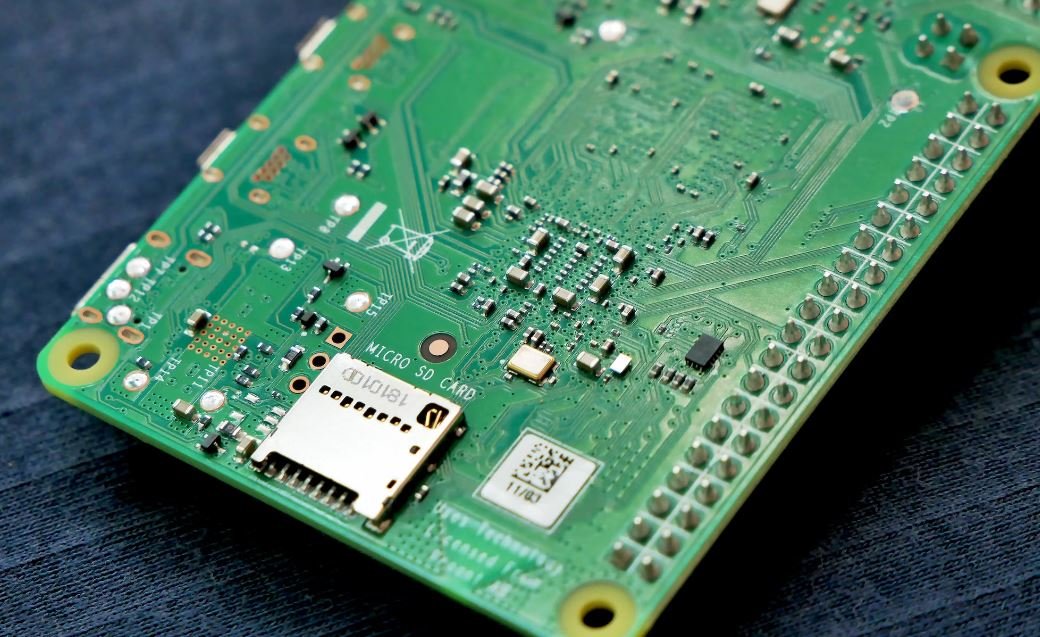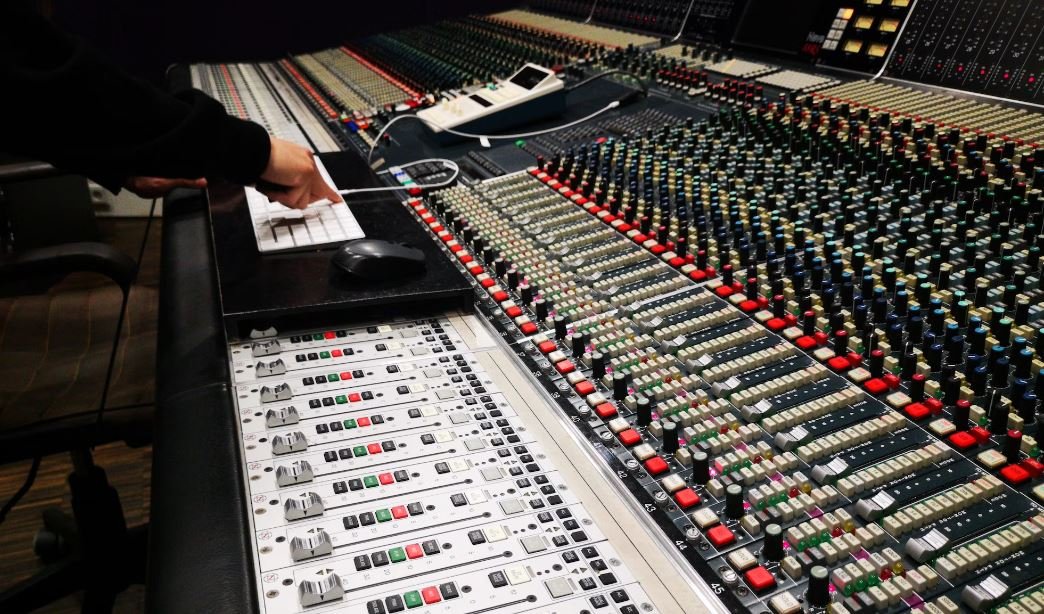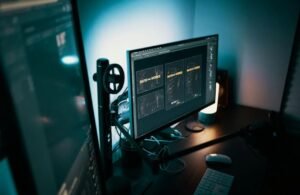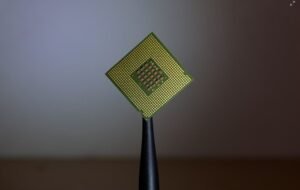Generative Model Image Data
Generative models are a class of machine learning models that have gained popularity in recent years. These models are capable of generating new data samples that resemble the training data. When it comes to image data, generative models offer exciting possibilities and have various applications in fields like computer vision, art, and data augmentation.
Key Takeaways
- Generative models can create new data samples that resemble the training data.
- They have diverse applications in computer vision, art, and data augmentation.
*Generative models allow for the generation of new data samples that resemble the training data, providing a solution to the challenge of generating realistic images.* In the realm of image data, generative models have opened up new avenues for creativity and exploration. These models utilize complex algorithms to learn patterns and structures from a given set of images, allowing them to generate new, similar images. This capability has proven invaluable in a variety of fields, from creating lifelike computer-generated characters in movies to enhancing the functionality of smartphone cameras by enhancing low-resolution images.
One of the most popular types of generative models is **Generative Adversarial Networks (GANs)**. GANs consist of two neural networks: a generator network and a discriminator network. The goal of the generator network is to generate realistic images, while the discriminator network tries to distinguish between real and generated images. Through an iterative training process, the generator network improves its ability to produce realistic images, and the discriminator network becomes better at differentiating between real and generated images.
*Generative models have the potential to revolutionize fields like fashion and art by providing artists with new tools for creativity.* Fashion designers can use generative models to create unique patterns and designs, enabling them to push boundaries and explore new styles. Artists can also leverage generative models to generate digital artwork that is highly realistic or completely abstract. These models can serve as a starting point for new creations or provide inspiration for artists looking for novel and unconventional ideas.
| Field | Applications |
|---|---|
| Computer Vision | Data augmentation, image synthesis, object recognition. |
| Art | Digital art generation, style transfer, creative exploration. |
| Fashion | Fashion design, pattern generation, style exploration. |
Another notable application of generative models in the realm of image data is **data augmentation**. Data augmentation involves generating new training samples by applying various transformations or perturbations to the existing data. This technique helps prevent overfitting and improves the generalization capability of machine learning models. Generative models can provide an effective way to augment image datasets by generating new and diverse samples that can expand the training data.
- Generative models enable the creation of new training data through data augmentation.
- They have the potential to enhance the generalization capability of machine learning models.
*Generative models could potentially be used in the future to generate highly realistic synthetic images for various purposes, from training self-driving cars to creating virtual reality environments.* The continuous advancement in generative model techniques and computational power makes this future vision seem closer than ever before. However, it is important to consider ethics and responsible usage of these models to ensure they serve societal interests without causing harm.
| Year | Advancement |
|---|---|
| 2014 | Introduction of DCGANs (Deep Convolutional Generative Adversarial Networks). |
| 2018 | Pix2Pix GANs for image-to-image translation. |
| 2020 | StyleGAN and BigGAN for high-quality image synthesis. |
In conclusion, generative models have revolutionized the field of image data by providing the ability to generate realistic and diverse images. These models have widespread applications, ranging from computer vision to art and fashion. With continuous advancements and responsible usage, generative models are poised to unlock new possibilities and drive innovation in various industries.

Common Misconceptions
Paragraph 1:
A common misconception people have around generative models for image data is that they always produce flawless and realistic images. In reality, generative models can sometimes generate images that are blurry, distorted, or contain artifacts. This is because the models learn from existing data and may struggle to generate entirely new and high-quality images.
- Generative models do not always produce picture-perfect images.
- Generated images may exhibit blurriness, distortion, or artifacts.
- Models struggle with generating entirely new and high-quality images.
Paragraph 2:
Another misconception is that generative models have complete control over the images they generate. While it is true that these models can be trained with specific attributes or styles, their output is still influenced by the underlying training data. The models learn from patterns in the input data and generate images based on those learned patterns. As a result, they cannot be considered as having complete deterministic control over the generated images.
- Generative models have some control over the images they generate.
- The output is influenced by the training data.
- They cannot be considered to have complete deterministic control.
Paragraph 3:
One widely spread misconception is that generative models can replace human photographers or artists. While they can generate impressive and compelling images, it is important to note that these models are not creative beings. They are only capable of replicating patterns and styles they learn from the training data. The artistic creativity, composition, and expression that human photographers and artists bring cannot be replicated by generative models.
- Generative models cannot replace human photographers or artists.
- They can replicate patterns and styles, but not true creativity.
- The artistic qualities of humans cannot be replicated.
Paragraph 4:
A misconception is that generative models are only applicable for creating artificial images or modifying existing images. While generating new images or modifying existing ones is a common use case, generative models have a broader range of applications. They can be utilized for tasks such as inpainting missing parts of an image, generating data for training other models, or even synthesizing realistic data for simulation purposes.
- Generative models are not limited to creating or modifying artificial images only.
- Inpainting missing parts or generating data for training are other applications.
- They can be used for synthesizing realistic data in simulations.
Paragraph 5:
Lastly, a common misconception is that generative models are always susceptible to bias and can produce unfair or inaccurate images. While it is true that bias can be present if the training data is biased, it is not an inherent characteristic of the models themselves. Efforts can be made to address and mitigate bias in the training data, such as carefully curating diverse and representative datasets. Additionally, techniques like adversarial training can help to minimize bias and improve the fairness of the generated images.
- Bias in generative models depends on the biases in the training data.
- Efforts can be made to address and mitigate bias.
- Adversarial training can help minimize bias and improve fairness.

Overview of Generative Models
Generative models are algorithms that are used in machine learning to generate new data that is similar to the training data. They are widely used in various fields, including image generation, speech synthesis, and text generation. In this article, we will explore the use of generative models specifically in generating image data. The tables below provide a visual representation and additional information about different aspects of generative models for image data.
Comparison of Popular Generative Models
| Model | Architecture | Training Time | Quality of Generated Images |
|---|---|---|---|
| Generative Adversarial Networks (GANs) | Generator + Discriminator | Several hours to days | High |
| Variational Autoencoders (VAEs) | Encoder + Generator + Decoder | Several minutes to hours | Medium |
| PixelCNN | Convolutional Neural Network | Several hours to days | High |
This table compares three popular generative models used for image data generation – GANs, VAEs, and PixelCNN. It provides information about their respective architectures, training times, and the quality of the generated images. While GANs generally produce high-quality images, VAEs offer a trade-off between training time and image quality, and PixelCNN also produces high-quality images but with longer training times.
Image Datasets used for Training Generative Models
| Name | Number of Images | Resolution | Domain |
|---|---|---|---|
| CelebA | 202,599 | 178×218 pixels | Celebrity Faces |
| LSUN | 10 million+ | Various | Indoor Scenes |
| CIFAR-10 | 60,000 | 32×32 pixels | Various Objects |
This table showcases some popular image datasets used for training generative models. It includes information about the dataset name, the number of images it contains, the resolution of the images, and the domain they represent. These datasets, such as CelebA, LSUN, and CIFAR-10, serve as valuable resources for training generative models to generate realistic images within specific domains.
Applications of Generative Models in Image Data
| Application | Description | Example |
|---|---|---|
| Image Inpainting | Generating missing parts of an image | Restoring damaged photographs |
| Image Super-Resolution | Increasing the resolution of an image | Enhancing low-resolution satellite imagery |
| Style Transfer | Transforming the style of an image | Converting photographs into paintings |
This table highlights some common applications of generative models in image data. It includes descriptions of each application and provides examples to illustrate their practical usage. Image inpainting can be used to restore damaged photographs, image super-resolution enhances low-resolution images, and style transfer enables the transformation of images into different artistic styles.
Performance Metrics for Evaluating Generative Models
| Metric | Description |
|---|---|
| Frechet Inception Distance (FID) | Measures the difference between generated and real image feature distributions |
| Inception Score (IS) | Evaluates the quality and diversity of generated images |
| Structural Similarity Index (SSIM) | Quantifies the similarity between generated and real images |
This table presents performance metrics used to evaluate generative models. Each metric is accompanied by a description of its purpose. The Frechet Inception Distance (FID) measures the difference between the feature distributions of generated and real images, the Inception Score (IS) assesses image quality and diversity, and the Structural Similarity Index (SSIM) quantifies the similarity between images.
Real-World Examples of Generative Models
| Application | Description | Reference |
|---|---|---|
| DeepArt | Transforming photographs into artistic styles | https://deepart.io/ |
| This Person Does Not Exist | Generating synthetic human faces | https://thispersondoesnotexist.com/ |
| Pix2Pix | Converting sketches to realistic images | https://phillipi.github.io/pix2pix/ |
This table showcases real-world examples of generative models and their respective applications. It provides a brief description of each application, accompanied by a reference to explore further. DeepArt transforms photographs into various artistic styles, “This Person Does Not Exist” generates synthetic human faces, and Pix2Pix converts sketches into realistic images.
Challenges in Training Generative Models
| Challenge | Description |
|---|---|
| Mode Collapse | Generator produces limited diversity of outputs |
| Instability | Models are sensitive to hyperparameter choice |
| Training Time | Long training durations, especially for large-scale models |
This table highlights some challenges faced when training generative models. Each challenge is accompanied by a brief description. Mode collapse refers to cases where the generator produces a restricted variety of outputs, instability arises from sensitivity to hyperparameters, and training time can be significant, especially when working with large-scale models.
Hardware Requirements for Training Generative Models
| Model | GPU Memory | RAM |
|---|---|---|
| GANs | 8GB+ (preferably more) | 16GB+ |
| VAEs | 4GB+ | 8GB+ |
| PixelCNN | 4GB+ | 8GB+ |
This table provides hardware requirements for training different generative models. The GPU memory and RAM specifications are outlined for GANs, VAEs, and PixelCNN. The specifications ensure smooth training and generation processes, with higher resource configurations typically yielding better performance.
Future Directions in Generative Models
| Research Area | Description |
|---|---|
| Unsupervised Learning | Exploring techniques for generating data without labeled examples |
| Conditional Generation | Generating data conditioned on certain attributes or constraints |
| Improved Stability | Addressing stability issues in training generative models |
This table presents some potential future directions in the field of generative models. Each research area is accompanied by a brief description. Unsupervised learning focuses on generating data without labeled examples, conditional generation involves generating data controlled by specific attributes or constraints, and improved stability aims to tackle training instabilities in generative models.
Conclusion
Generative models, particularly in image data, have revolutionized various applications by enabling the generation of new, realistic data. This article provided a comprehensive overview of generative models and their applications in image data generation. We explored various models, image datasets used for training, performance metrics, real-world examples, challenges, hardware requirements, and future directions in the field. Generative models continue to advance, offering exciting possibilities for creative expression, data augmentation, and image-based problem-solving in numerous domains.
Frequently Asked Questions
What is a generative model?
A generative model is a type of artificial intelligence model that learns to generate new data that is similar to a given set of training data. It is commonly used in various applications such as image synthesis, text generation, and speech synthesis.
How do generative models work?
Generative models utilize statistical techniques and machine learning algorithms to learn the underlying patterns and structure of the training data. They then use this knowledge to generate new samples that exhibit similar characteristics to the training data.
What are some common types of generative models?
Some common types of generative models include Variational Autoencoders (VAEs), Generative Adversarial Networks (GANs), and Restricted Boltzmann Machines (RBMs). Each of these models has its own strengths and weaknesses, making them suitable for different applications.
What is image data generation?
Image data generation refers to the process of creating new images that are similar to the existing dataset. Generative models can be trained on a set of images and then generate new images that resemble the original dataset in terms of visual features, colors, textures, and more.
Can generative models be used for image manipulation?
Yes, generative models can be used for image manipulation. By learning the patterns within a dataset, generative models can generate variations of existing images, modify specific attributes, or even combine multiple images to create new compositions.
What are the applications of generative models in image data?
Generative models have various applications in image data, including image synthesis, image inpainting (filling in missing parts of an image), style transfer, super-resolution, and data augmentation for training deep learning models.
Are there any limitations of generative models?
Yes, generative models have some limitations. They may generate samples that look realistic but lack semantic meaning, exhibit mode collapse (producing limited variations), or struggle with generating high-resolution images. Additionally, the training process of generative models can be computationally intensive and require large amounts of data.
How can generative models be evaluated?
Generative models can be evaluated using various metrics such as Inception Score, Fréchet Inception Distance (FID), or by conducting user studies where human raters assess the quality of generated samples. These evaluation methods help quantify the realism, diversity, and consistency of generated data.
What are the potential ethical concerns related to generative models?
Generative models raise ethical concerns regarding the generation of realistic deepfake images/videos, privacy implications, and potential misuse of the technology for malicious purposes such as generating fake news or conducting identity theft. Responsible use and regulation of generative models are important considerations.
What are some notable applications of generative models outside of image data?
Generative models have found applications beyond image data. They are used in natural language processing for text generation, music composition, video synthesis, and even in drug discovery to generate new molecular structures. The versatility of generative models allows them to be applied in diverse domains.




